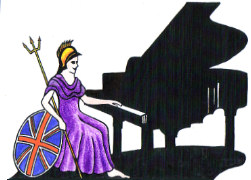Teachers, Accompanists and Piano Entertainers in the UK

UK Piano Page

Colonial House
Southend-on-Sea, Essex SS0 9ST
England
We specialise in reconditioned and restored
53 High Street
Berkhamsted, Hertfordshire HP43QH
England
We know that when it comes to pianos, one size
111-113 Ewell Road
Surbiton, London KT6 6AL
England
We are one of the largest retailers of both new
Unit 60 The Triangle
Wolverton Park
Milton Keynes, Buckinghamshire MK125FJ
England
We are a family run music shop in Wolverton,
121-125 Royal Avenue
Belfast, County Antrim BT1 1FF
Northern Ireland
The Belfast music scene has been quietly turning
Music Festival for performers and guests Our 10th
18-06-2022 01:30PM
The Morecambe Bay Piano Group was set up to extend
11-12-2021 02:00PM
The Morecambe Bay Piano Group was set up to extend
08-01-2022 02:00PM
The Morecambe Bay Piano Group was set up to extend
12-02-2022 02:00PM